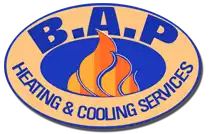Common Furnace Repair Issues and Solutions
Understanding common furnace repair issues and solutions is vital for maintaining a comfortable and efficient home environment. Furnaces, like any other mechanical systems, are prone to various problems over time. By recognizing these issues early, homeowners can ensure their heating systems function effectively, especially during the colder months when reliable heat is crucial.
Recognizing Common Furnace Issues
Identifying common issues with your furnace early can prevent larger problems down the line. One of the first signs is unusual noises, such as banging, rattling, or screeching sounds, which often indicate loose or damaged components. Our professionals frequently find that these issues require tightening parts or replacing worn components to restore proper function.
Another common issue is weak or no airflow from the vents. This may result from a clogged filter, blocked ductwork, or a failing blower motor. Replacing filters regularly and ensuring ducts are clear can often resolve airflow issues. If the problem persists, a professional inspection is necessary to diagnose the blower motor’s condition.
Uneven heating throughout the home suggests an imbalance in the system’s airflow. This can occur due to blocked vents, improper thermostat settings, or an underlying issue with the furnace itself. Ensuring vents are open and unobstructed and revisiting thermostat settings can help. However, persistent uneven heating may require a more detailed inspection by our technicians to identify the root cause.
Diagnosing and Fixing Pilot Light Problems
Pilot light issues are a common cause of furnace malfunction. The pilot light ignites the burners, allowing the furnace to produce heat. When the pilot light goes out or fails to stay lit, it’s usually due to a few reasons:
1. Drafts: A draft can blow out the pilot light. Inspect the area around the furnace for open windows, doors, or gaps that might allow air to disrupt the flame.
2. Dirty Pilot Orifice: Dirt and debris can clog the pilot orifice, preventing the flame from being consistent. Cleaning the orifice gently with a needle can resolve this issue.
3. Faulty Thermocouple: The thermocouple sensor ensures the pilot light stays lit. If faulty, it can mistakenly shut off the gas supply. Replacing the thermocouple often corrects this problem.
To address pilot light problems, start by checking for drafts and cleaning the pilot orifice. If the pilot light still doesn’t stay lit, the thermocouple might need replacement. Always turn off the furnace and allow it to cool before attempting any maintenance. If these actions don’t resolve the issue, it’s crucial to call our professionals for a thorough inspection. Our experts can safely diagnose and repair the problem, ensuring your furnace operates efficiently once again.
Troubleshooting Blower Motor Failures
Blower motor failures can significantly impact your furnace’s performance. The blower motor is essential for distributing warm air throughout your home. When it fails, you may notice reduced airflow or no airflow at all.
One common cause of blower motor failure is a tripped circuit breaker. Check your home’s electrical panel for any tripped breakers and reset them if necessary. If the breaker trips repeatedly, there may be an electrical issue requiring professional attention.
Another possible issue is a faulty motor capacitor. The capacitor helps start and run the blower motor. A malfunctioning capacitor can prevent the motor from operating correctly. Inspect the capacitor for any visible damage and replace it if needed.
A clogged air filter can also lead to blower motor issues. Dirty filters restrict airflow, causing the motor to overheat and potentially fail. Regularly replacing air filters ensures proper airflow and helps maintain the blower motor’s functionality.
If these troubleshooting steps do not resolve the problem, it might indicate a more severe issue with the blower motor itself. Our technicians can perform a thorough inspection, diagnose the issue, and make the necessary repairs to restore your furnace’s performance.
Addressing Thermostat Malfunctions
Thermostat malfunctions can cause your furnace to operate inefficiently. A malfunctioning thermostat might result in the furnace not turning on or off, incorrect temperature readings, or cycling on and off too frequently.
Start by checking the thermostat’s settings to ensure they are correct. Verify that it is set to “heat” mode and the temperature is set higher than the current room temperature. Sometimes, simple adjustments can resolve the issue.
Next, inspect the thermostat’s batteries. Low battery power can cause the thermostat to malfunction. Replace the batteries with new ones and check if the problem persists.
Consider the placement of the thermostat. It should be located away from direct sunlight, drafts, and heat sources, as these can affect its temperature readings. A thermostat placed in an unsuitable location may require relocation for accurate readings.
If these steps do not resolve the issue, the thermostat itself might be faulty and need replacement. Our professionals can assess whether a new thermostat is needed and handle the installation, ensuring that your furnace operates efficiently once more.
Conclusion
Tackling common furnace repair issues can help maintain a comfortable and efficient home environment. Recognizing symptoms like unusual noises, airflow problems, pilot light issues, blower motor failures, and thermostat malfunctions allows homeowners to address these problems promptly, preventing larger and more costly repairs. Timely maintenance and professional intervention are key to ensuring your furnace operates smoothly.
For reliable and efficient furnace repair in Guelph, contact B.A.P. Heating & Cooling Services. Our team of skilled technicians is here to help you with your heating system’s needs, providing top-notch service and peace of mind!
About the Author

Paul Palmer
Paul Palmer is the owner of B.A.P. Heating and Cooling, bringing over 30 years of experience to the HVAC industry.







